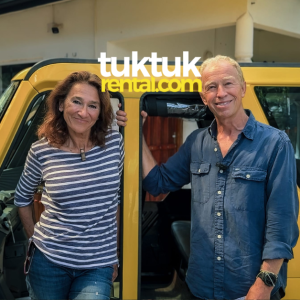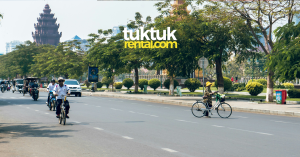Author : Avantika Chaturvedi
Sri Lanka has become synonymous with a self drive tuktuk adventure, and not without reason. This island nation has it all for the perfect road trip: bustling city streets, scenic coastal roads, winding mountain paths and long open highways with picture perfect scenery to keep you going for miles. Since this is one of the few countries in the world where you can do it, renting a tuktuk in Sri Lanka is now a quintessential Sri Lankan experience!
That is not to say, however, that driving a tuktuk comes without its risks. Like driving any other vehicle (even your own) in any country (your own included) comes with its road safety concerns. But this guide to driving safely in Sri Lanka is here to help you understand the risks and precautions to ensure a secure and enjoyable tuktuk journey in Sri Lanka.
Understanding Sri Lankan Road Conditions
Traffic Culture and Driving Style
Sri Lankan roads can often be chaotic – especially in the cities – with a mix of tuktuks, buses, motorcycles, pedestrians, and sometimes even animals like cows, cats, dogs and elephants sharing the streets. Local drivers tend to rely on honking as a form of communication, and right of way rules are loosely followed. While this might seem overwhelming at first, adapting to the flow of traffic is not as daunting as it may seem.

Renting a tuktuk with Tuktuk Rental comes with comprehensive driving lessons that help you feel at ease on Sri Lankan roads. All your questions and apprehensions are answered during this session to turn you into a confident tuktuk driver, local Sri Lankan style!
Some key points to remember:
- Sri Lanka drives on the left side of the road.
- Use the horn liberally. In Sri Lanka, the horn is a communication tool, not aggression!
- Watch for unexpected obstacles like cows, dogs, potholes and pedestrians.
- Avoid driving at night, as roads can be poorly lit and unpredictable.
Road Infrastructure
Highways and Main Roads
Sri Lanka has an impressive expressway system, such as the Southern Expressway and the Colombo-Kandy Expressway. However, tuktuks are not allowed on expressways, meaning they primarily navigate smaller roads, national highways (A roads), and provincial roads (B roads).
The national highways, especially those connecting major cities like Colombo, Galle, Kandy, and Ella, are generally well maintained. These roads are paved and marked but can be challenging in parts due to heavy traffic, frequent overtaking, and the presence of buses, trucks, and motorcycles.
The best way to navigate is to switch your Google Maps to “Motorcycle” option so you do not mistakenly enter an Expressway and get fined. While driving, stick to the speed limit and keep to the left of the road, allowing bigger vehicles like buses and lorries to overtake. Remember, practice is key: The more you drive, the more confident a driver you become!
Urban Roads
Road conditions are fair in cities like Colombo, Kandy, and Galle, but congestion is a major issue. Traffic rules exist, but enforcement can be inconsistent.
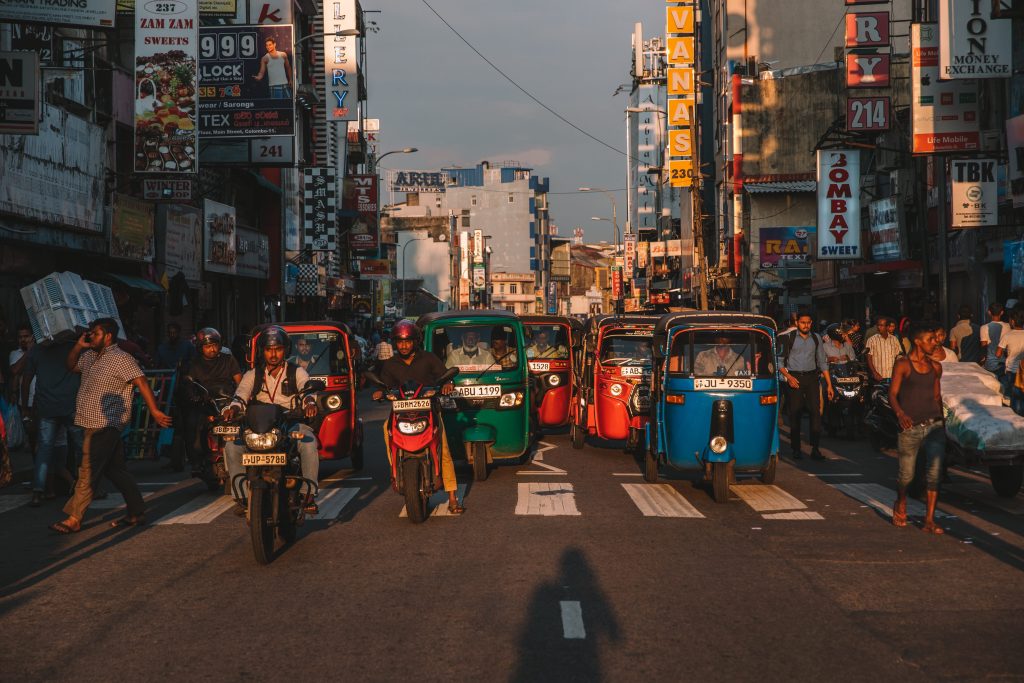
The good news is that tuktuks are easier to manoeuvre through traffic jams than cars. As a new driver, you might even stall in slow moving traffic and red stop lights. But that is okay. It is important to keep your cool even though the traffic behind you might be honking. Remember the steps taught to you in driving lessons and you will be just fine.
It is also not uncommon to have friendly locals hop out of their own vehicles to help you out even if it is on traffic congested roads!
Read more about How Safe is it to Self-Drive a Tuktuk in Sri Lanka (With Statistics)
Rural and Mountain Roads
In rural villages and hill country regions like Ella, Nuwara Eliya, and Haputale, roads are often narrow, winding, and occasionally in poor condition with potholes due to incessant rains in these parts. Landslides during the monsoon season can also damage roads, leading to temporary closures or detours.
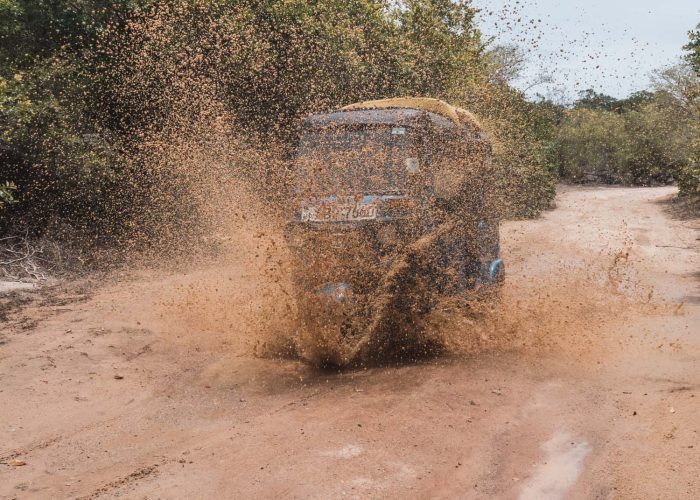
Tuktuks are built to survive all these challenges with almost no difficulties. On steep, uphill roads, your tuktuk might not be able to go beyond 20 to 30 kilometres per hour, but that is just more opportunity for you to enjoy the misty tea plantations and waterfalls that abound these regions!
While driving a tuktuk on hilly roads, remember to drive mostly on second gear to avoid stalling. If you do stall uphill, use the “handbrake accelerate method”, wherein you engage the handbrake and accelerate slightly and then release the handbrake while maintaining acceleration to prevent the tuktuk from rolling backwards.
Safety Concerns While Driving a Tuktuk in Sri Lanka and How to Mitigate Them
Choosing a Reliable Tuktuk
As the popularity of renting a tuktuk in Sri Lanka is on the rise, many rental agencies have sprung up over the years. Some of them, unfortunately, often do not meet the minimum safety standards and put your lives at risk in the name of cheaper prices. That is why choosing a reliable operator is important.
This is where we, Tuktuk Rental come in:
- We are the first tuktuk rental company in Sri Lanka with almost a decade of experience in the industry.
- Our fleet of tuktuks is in prime condition with regularly serviced vehicles, a factor missing in many other rental companies.
- We offer end to end solutions by providing reliable vehicles, driving lessons, insurance, proper licensing assistance and other services.
- We have 24×7 customer support available via WhatsApp and local calling, and also have recommended tuktuk mechanics in most tourist towns across Sri Lanka.
- We offer a variety of safety add ons for your tuktuk, including baby seats and more.

Driving a Tuktuk in Sri Lanka as a Solo Female Traveller
Exploring Sri Lanka by tuktuk as a solo female traveller can be an incredibly rewarding and empowering experience. Not only does it offer the freedom and flexibility to take on the country at your own pace, it can also be empowering for both you and local onlookers to see a woman driving a vehicle which is otherwise a majorly male dominated space in Sri Lanka.
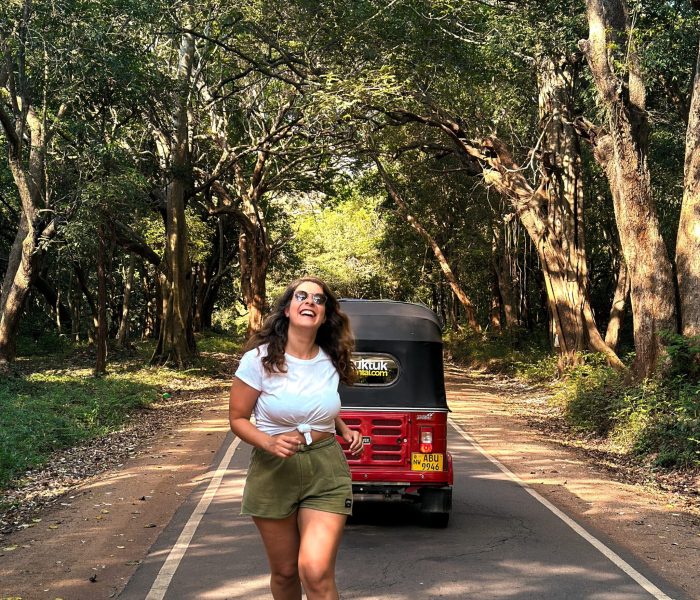
Sri Lanka is generally a safe country for solo female travellers, and many women have successfully driven tuktuks across the island without issues. Many women consider Sri Lanka to be one of the safest countries they have visited. The locals are mostly friendly and often willing to help if you need directions or assistance.
However, as with solo travel experiences in any other country, it is important to stay aware of your surroundings and take precautions you would generally take anywhere else:
- Beach towns like Mirissa and Arugam Bay have a relaxed dress code, but covering up in cities and rural areas might be a good idea to avoid unwanted attention.
- Look for accommodation options with strong reviews, especially from other solo female travellers. Places run by families or female hosts often provide a more comfortable and safe experience.
- You might want to avoid driving after dark whenever you can.
- Sri Lankans are generally warm and respectful, but some may not be used to women travelling alone, let alone driving a tuktuk alone! A friendly yet confident attitude can help in interactions.
- Having mobile data makes navigation easier and ensures you can call for help if needed. Dialog and Mobitel offer affordable tourist SIMs with good coverage.
- Always trust your gut and reassess the situation if you feel uncomfortable. A simple “no, thank you” is usually enough. Sri Lankans are generally helpful, so do not hesitate to ask for assistance from shopkeepers, hotel staff, or other travellers if needed.
- Solo travel does not mean you have to be alone the whole time! Meeting fellow travellers at hostels, yoga classes, or organised tours can enhance your experience. Facebook groups like the Tuktuk Roadtrip Planning & Travelmates and Host A Sister are also great for advice and meeting up with other solo female travellers.
Tips for Families with Children Renting a Tuktuk in Sri Lanka
Renting a tuktuk as a family in Sri Lanka is an unforgettable adventure that brings freedom and excitement to your trip. Tuktuks make road trips more interactive and kids love waving to friendly locals and spotting wildlife along the way! With some planning and safety measures, it can be both fun and stress free!
To ensure optimal safety and comfort, here are some essential tips:
- Choose a reliable rental company with good reviews and experience working with families. Ensure they provide well maintained tuktuks with proper documentation and insurance, and enquire about child friendly modifications, such as baby seats, seatbelts and side handlebars.
Hint: Tuktuk Rental checks all these boxes and then some!
Read more: Planning a Family Trip to Sri Lanka
- Stick to the speed limit and avoid driving at night. Many rural roads lack proper lighting, making night driving riskier.
- Pack comfort essentials for kids such as cushions or blankets for extra seat padding, sunglasses and sunscreen for protection from the sun, rain covers or ponchos for sudden tropical downpours and snacks and water for long rides.
- Planning a child friendly route is key. Avoid long, bumpy routes that may be uncomfortable for kids and plan stops at kid friendly attractions like beaches, waterfalls, and wildlife parks.
- Remind kids to stay seated at all times. Encourage them to hold onto the side bars for stability and make sure they avoid leaning out of the tuktuk or touching hot engine parts near the back.
Tuktuk-ing in Sri Lanka as an Older Traveller (Senior over 50)
Contrary to popular belief, driving a tuktuk in Sri Lanka is a great adventure for older travellers. It offers the freedom to explore the country at their own pace, visit hidden gems away from the tourist crowd, stop for scenic views, and immerse yourself in local culture.
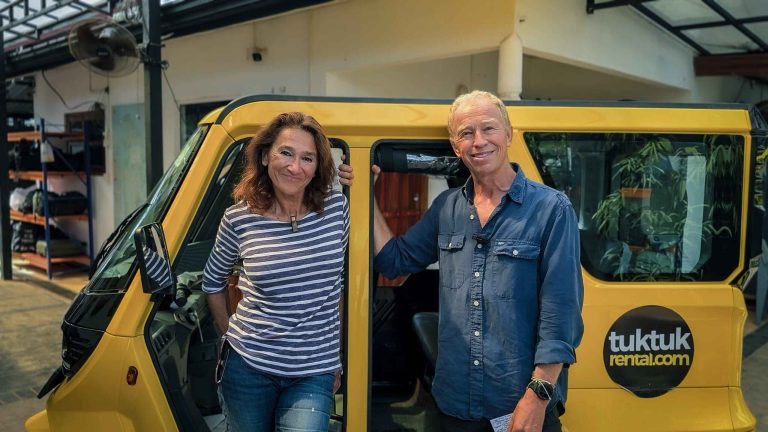
Here are some essential tips to ensure your comfort and safety:
- Request a newer tuktuk with cushioned seats for extra comfort and a smooth engine with good suspension, especially if traveling on bumpy rural roads.
- Carrying cushions for lumbar support can help make long rides more comfortable.
- Be mindful of entry and exit, as tuktuks sit low to the ground.
- Wear sunglasses, a hat and sunscreen for protection from the tropical sun. Remember to stay hydrated and drink plenty of water and stop to gorge on some roadside tender coconut!
- Avoid driving during rush hours or in busy city centers to reduce stress.
- Stick to daytime driving as some roads might have limited lighting at night.
- Take frequent breaks to rest and stretch, especially on longer journeys.
- Take extra precautions during the rainy season as roads can get slippery.
- Keep emergency contacts such as your rental company’s contact number and local emergency services handy.
Keep a small first aid kit with essentials like medication and bandages.
Sri Lanka Emergency Contacts and Support
- Police Hotline: 118/ 119
- Tourist Board Hotline: 1912
- Ambulance / Fire and Rescue: 110
- Tourist Police: +94 11 2421052
- Government Information Centre: 1919
- Tuktuk Rental 24×7 Emergency Service: +94 76 188 9929
FAQs
Yes, Sri Lanka is generally a safe destination for travellers. While the country has had a rocky past with the civil war and economic crash, the country is still best known for its warm hospitality and diverse landscapes. Violent crime against tourists is rare, but petty theft can occur in crowded areas. Overall, with proper precautions, Sri Lanka is generally a safe adventure!
Yes, tuktuks can be a safe and enjoyable mode of transport in Sri Lanka if you take the right precautions. By choosing reliable rental agencies, understanding road conditions, and following safety guidelines, all kinds of travellers – solo adventurers, families, and older tourists alike – can confidently explore Sri Lanka by tuktuk.
Yes! Renting a tuktuk in Sri Lanka offers freedom, flexibility, and an adventure of a lifetime. It allows you to visit offbeat locations, stop for scenic views, and experience local culture more intimately. Tuktuks are also fuel efficient and more affordable compared to hiring private cars. So there is almost no reason why one would not want to hire a tuktuk in Sri Lanka!
While Sri Lanka is generally safe, travellers should be cautious of scams, overcharging in tourist areas, and pickpocketing in crowded places. When driving tuktuks, be mindful of road safety, as traffic can be chaotic. In wildlife areas, respect wildlife and avoid straying into restricted zones. Only drink filtered water and avoid drinking tap water unless the locals tell you it is safe.
The standard Bajaj tuktuk in Sri Lanka can fit up to three passengers in the back seat. Some larger tuktuks like the Piaggio Ape can accommodate four to five people, but this may be a tight squeeze. If you are carrying luggage, space becomes more limited and the most comfortable tuktuk road trip is with no more than 2 people in the back.
You might also consider downloading the Tuktukrental Travel App. It features offline maps, offbeat recommendations and even helps fellow tuktuk-ers on the road connect for information or just a few post drive beers – or the local Sri Lankan arrack if you are feeling adventurous!

